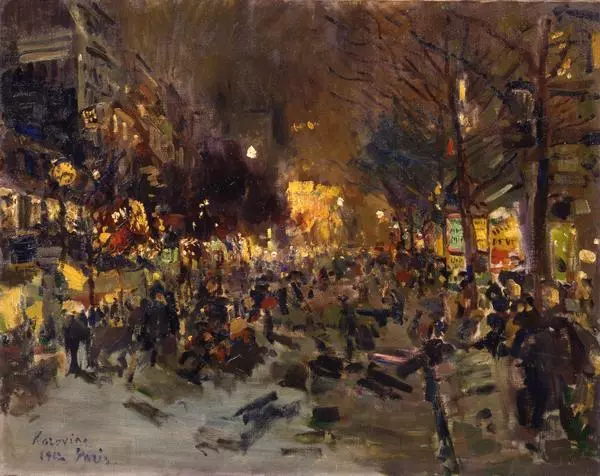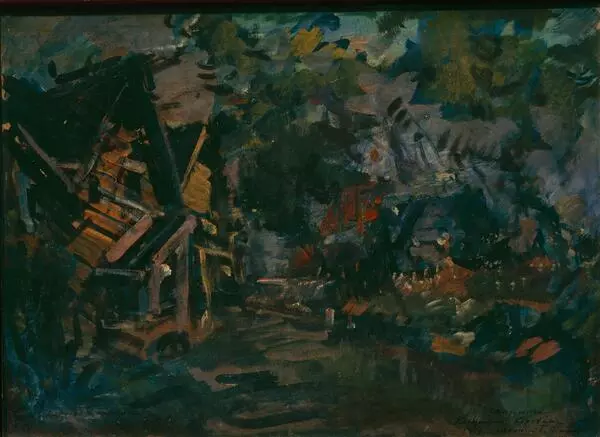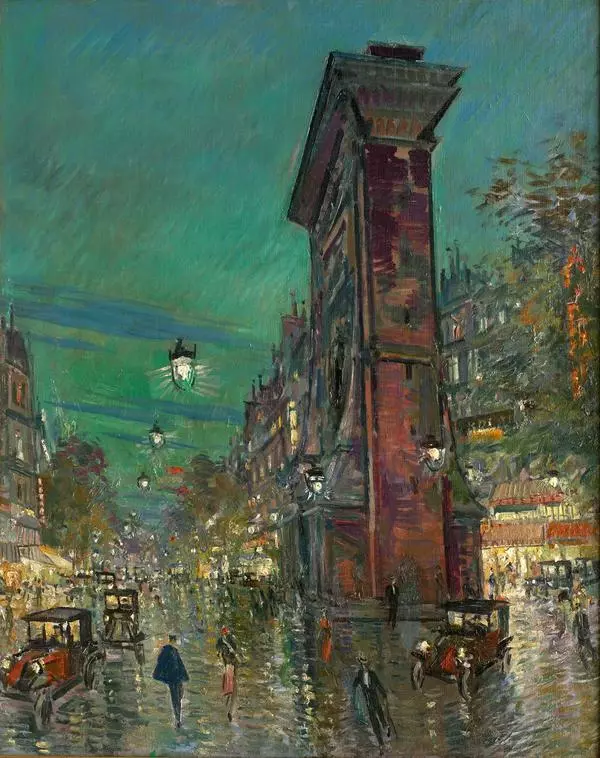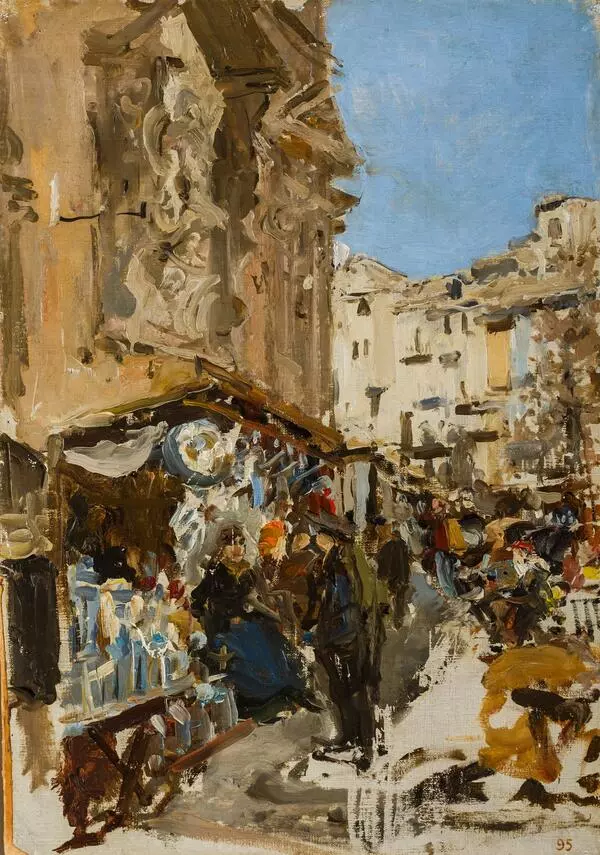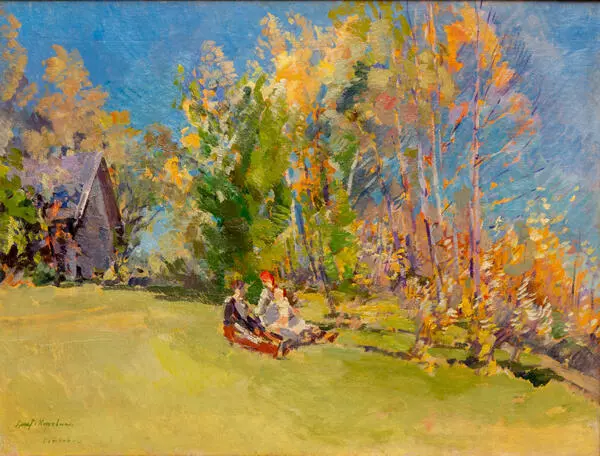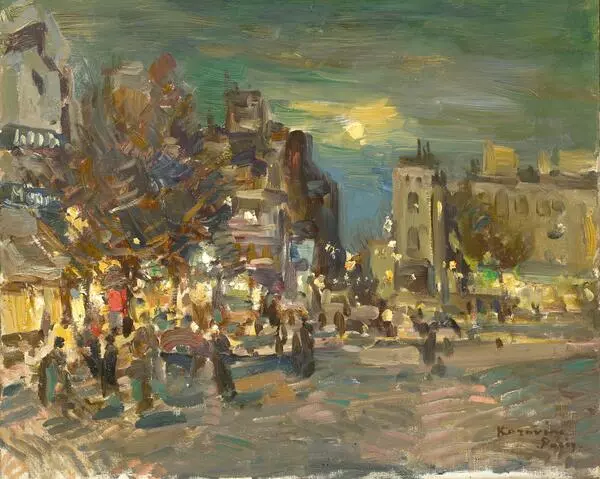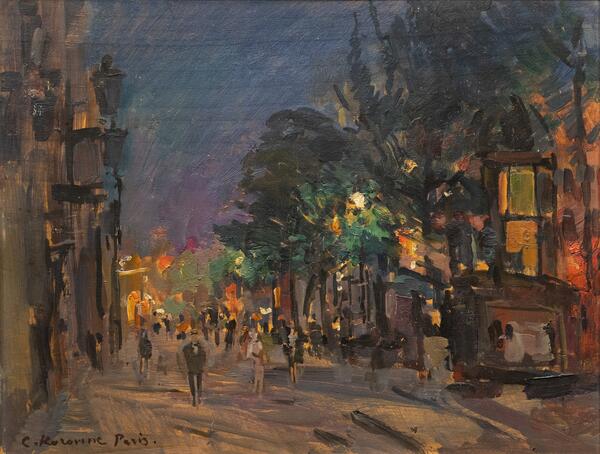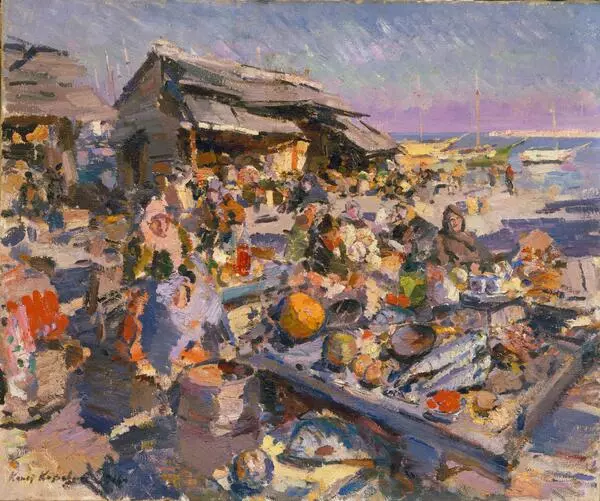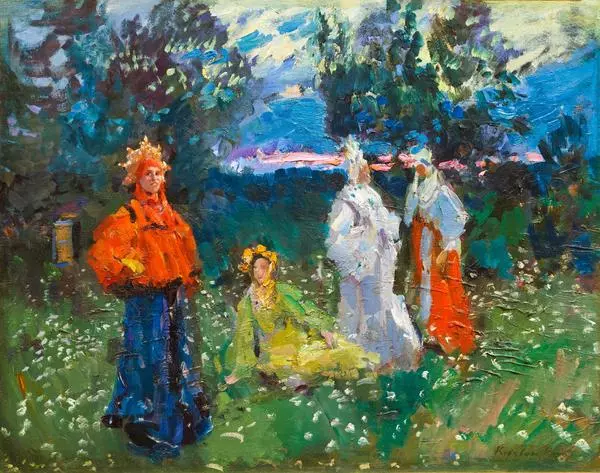Konstantin Alexeevich Korovin, the future painter, theater artist, teacher and writer, was born in a merchant family in Moscow in 1861.
At the age of 14, he entered the Architecture Department of the Moscow School of Painting, Sculpture and Architecture. A year later, he transferred to the Landscape Class taught by the artist Alexey Savrasov. The works of Konstantin Korovin of that period are marked by imitating the teacher. Alexey Savrasov left the school for health reasons, so Konstantin Korovin was transferred to the studio of the painter Vasily Polenov, who introduced the student to the art of impressionists. At the age of 22, Konstantin Korovin became fascinated by this art movement. His first famous work — “Portrait of a Chorus Girl” — was painted in this style. The teachers of the school did not approve of the innovations, so the artist did not receive the title of Class Artist upon graduation.
In 1884, Konstantin Korovin became a member of the Abramtsevo art circle. Its founder was the entrepreneur and philanthropist Savva Mamontov. Korovin revealed himself as a theater artist: he painted sets for performances, plays, and operas.
At the age of 31, Korovin went to France for a year to study modern art. On his return, he traveled across Russia, visiting Murmansk, Arkhangelsk, the banks of the Northern Dvina River and Novaya Zemlya.
From the 1900s, the artist worked actively in different theaters, designing the sets for the productions of the Mariinsky Theater in St. Petersburg, the Bolshoi Theater in Moscow and the La Scala Theater in Milan. At that time, Konstantin Korovin began teaching at the Moscow School of Painting, Sculpture and Architecture.
The village of Gurzuf on the southern coast of Crimea occupied a special place in the work of Konstantin Korovin. The artist lived there in his own two-story summer house “Salambo”, which was visited by many artistic personalities, such as the painter Ilya Repin, writer Maxim Gorky, opera singer Fyodor Chaliapin and others.
Now this place is called the House of Artists named after Konstantin Korovin and is a Cultural Heritage Object.
After the October Russian Revolution, Konstantin Korovin was engaged in the preservation of art monuments.
At the end of 1922, the artist went to France,
where he held a solo exhibition. When the artist’s eyesight deteriorated, he
had to give up fine art. He began to publish his memoirs and stories. At the
age of 78, Konstantin Korovin died of a heart attack in Paris.






